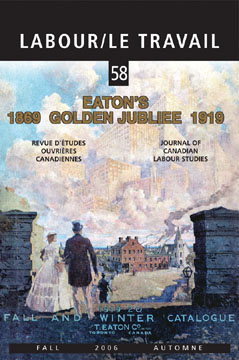Abstract
Compared to Canada, Australian trade union membership grew dramatically in the period from 1900 to 1914. Through a comparative analysis of two iron and steel plants in Canada and Australia, this article broadens the debate about union growth in this particular period as well as generally. One plant was located at Lithgow, New South Wales, and the other at Sydney, Nova Scotia. While workers at both plants unionized in September-October 1902, the union at the Sydney plant collapsed following a major strike in 1904. Iron and steel unionism did not revive at the Sydney plant until during World War I. With the exception of a brief period, iron and steel unionism continued at the Lithgow plant for the period under examination. This article attempts to explain why iron and steel unionism persisted at Lithgow rather than Sydney and focuses on the factors of the state, the ethnic diversity of the work force, management, and community or locality.
Résumé
Comparé au Canada, le nombre de membres des syndicats australiens s’est accru de façon dramatique dans la période de 1900 à 1914. Par une analyse comparative de deux usines sidérurgiques au Canada et en Australie, cet article permet d’élargir le débat sur la croissance des syndicats dans cette période particulière ainsi que de façon générale. Une usine était située à Lithgow, Nouvelle-Gales du Sud et l’autre à Sydney, Nouvelle-Écosse. Bien que les travailleurs des deux usines se soient syndiqués en septembre-octobre 1902, le syndicat de l’usine de Sydney s’effondra à la suite d’une grande grève en 1904. Le syndicalisme ne put se réaffirmer à l’usine de Sydney avant la première Guerre Mondiale. À l’usine de Lithgow au contraire, le syndicalisme s’est maintenu durant la période faisant l’objet de l’étude, à l’exception d’un bref moment. Cet article essaie d’expliquer pourquoi le syndicalisme a persisté à Lithgow plutôt qu’à Sydney et se concentre sur les facteurs comme l’État, la diversité ethnique de la main-d’œuvre, l’administration patronale, la communauté et la localité.
